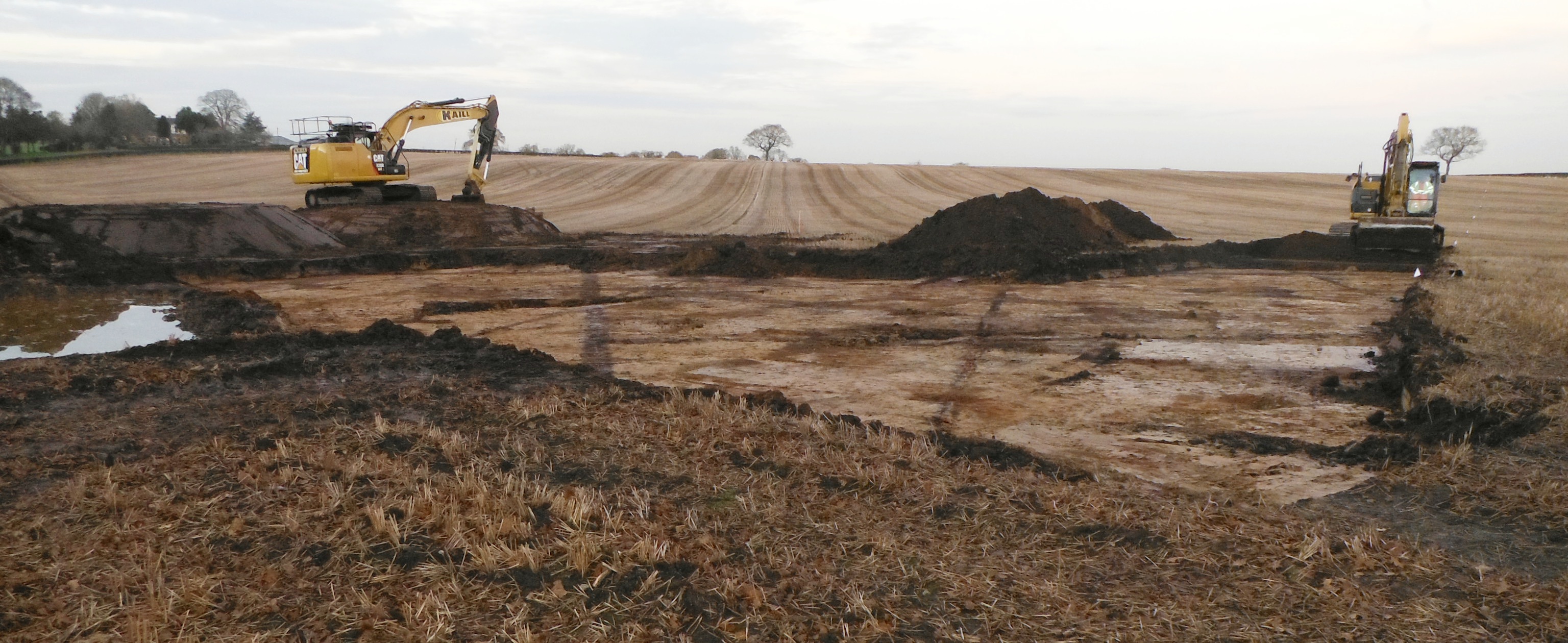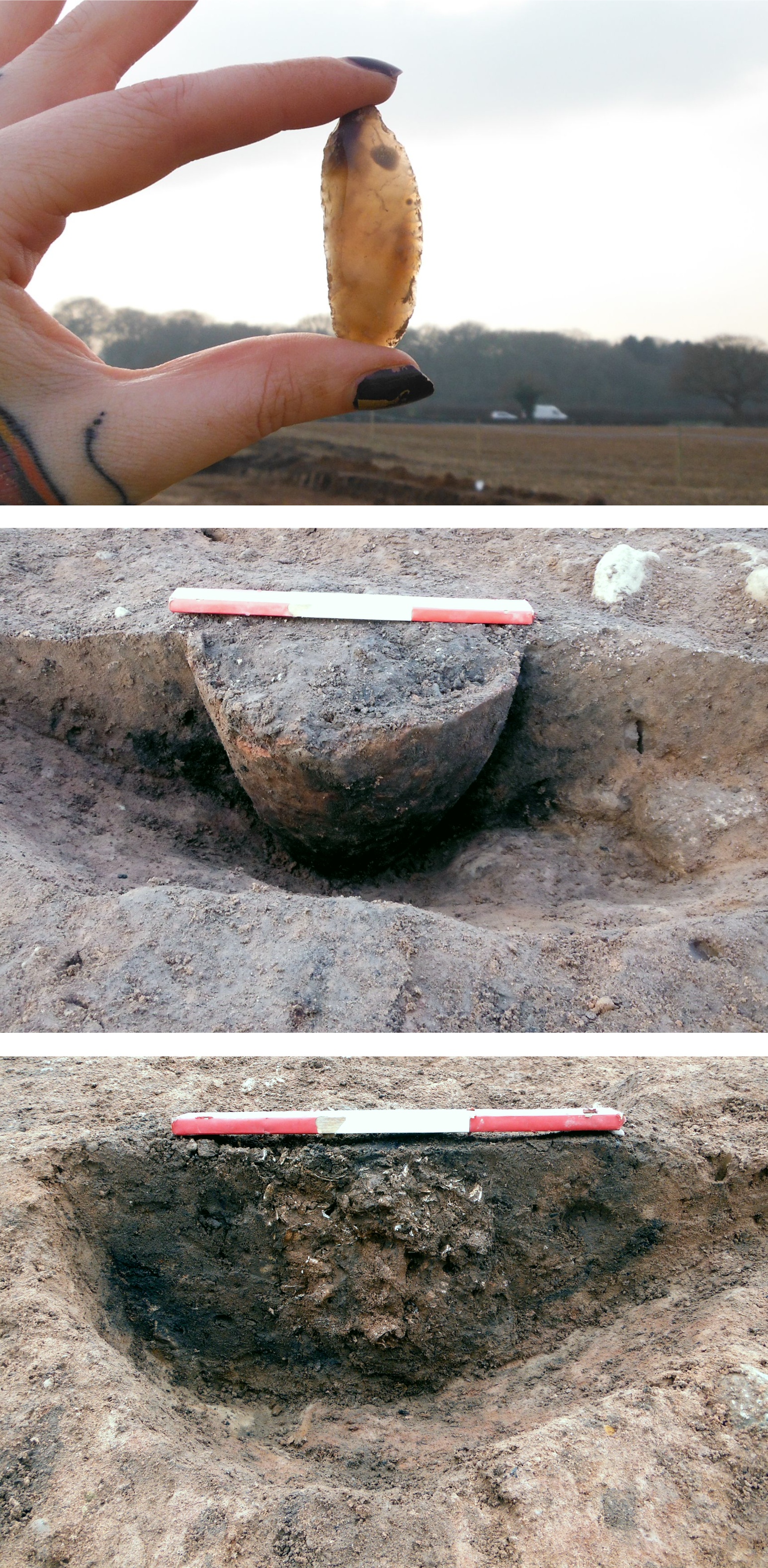A team from the Sheffield Office has been busy in Cheshire, carrying out investigations along the course of the proposed A556 Knutsford to Bowdon Relief Road, currently being constructed by Costain Group plc on behalf of the Highways England.


The area around Bucklow Hill has proved to be of particular interest, due to the uncovering of a ‘funerary landscape’. A ring-ditch measuring 25 m in diameter, probably a ploughed-out Bronze Age round barrow, served as the focus for a range of funerary rituals, including the burial of urned and bagged cremations. Twelve east–west aligned inhumation graves were also found, although the acidic soil conditions meant that not even the skeletons had survived. A second cluster of cremation graves, all unurned, was found 80 m from the ring-ditch, providing further evidence that the use of Bucklow Hill for ritual activities was a complex and drawn-out affair.
Although not particularly high, Bucklow Hill provides good views across to the Peak District and the moors north-west of Manchester, where prehistoric burial sites are already known. It seems likely that the hill was deliberately chosen for similar rituals because of the sense of connection it offered with important places in the wider landscape.
Grave goods or other artefacts were largely absent on the site, and so we intend to use radiocarbon dating to better understand when, and for how long, the different burial rites were undertaken on the hill. Excavated evidence of prehistoric Cheshire is very scarce, and the work at Bucklow Hill represents a rare example of a significant funerary site investigated using modern excavation techniques.